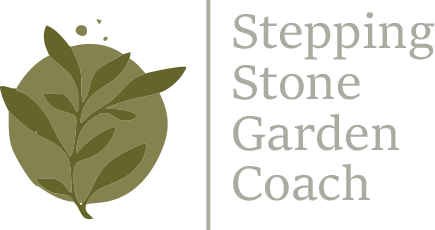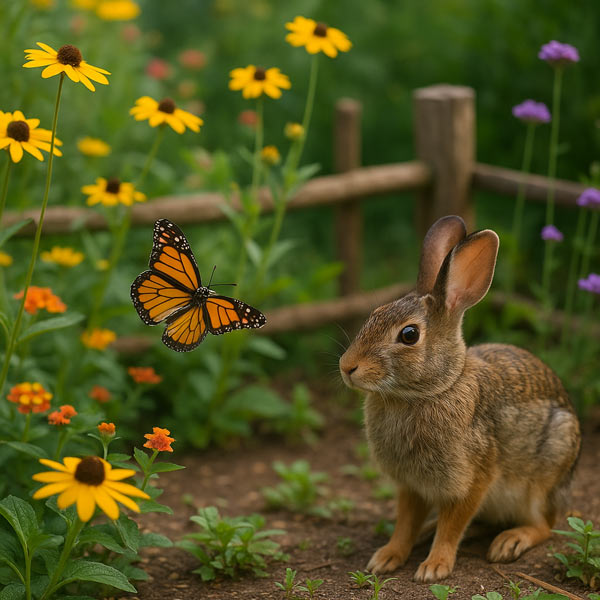If you’ve ever planted a tender new herb, stepped back to admire your handiwork—and then found it nibbled to the nub by morning—this one’s for you.
Wildlife in the garden can be magical. Monarch butterflies hovering over milkweed? Yes, please. Songbirds splashing in the birdbath? Delightful. But rabbits treating your raised bed like an all-you-can-eat buffet? That’s a hard no.
The trick is finding balance: welcoming the pollinators and helpers, while gently keeping the freeloaders at bay.
Butterflies Belong
Butterflies do more than look pretty—they’re pollinators, playing a key role in helping fruits, vegetables, and flowers reproduce. A single butterfly garden can support dozens of species (especially here in Florida), and it doesn’t take much to get started:
Native nectar plants like pentas, coreopsis, and blanketflower
Host plants like milkweed for monarchs, parsley for swallowtails, or passionflower for Gulf fritillaries
A shallow water source (think: a small saucer with marbles)
Your reward? A fluttering parade of color, beauty, and ecological benefit.
Bunnies, However…
Let’s be honest: they’re adorable. They twitch their noses and look innocent. But those fluffy-tailed foragers can mow down a row of seedlings in minutes. Especially fond of:
Lettuce, Beans, Basil, Carrots (of course)
In the wild, rabbits serve a purpose—but in the garden? They’re more menace than mascot.
Draw the Line (Gently)
Creating a wildlife-friendly garden doesn’t mean rolling out the red carpet for every creature. Here’s how to set firm but friendly boundaries:
Fence Smart
A simple 2-foot wire fence around raised beds works wonders
Bury it a few inches underground to stop diggers
Grow Sacrificial Plants
Plant clover or dandelion nearby to lure nibblers away from your main crops
Think of it as a peace offering to Mother Nature
Use Scent as a Signal
Rabbits dislike the smell of garlic, onions, and mint
Scatter these among your tender veggies as natural deterrents
Keep it Moving
A garden with motion—spinners, wind chimes, or fluttering ribbons—feels less safe to rabbits
Bonus: Attract the Good Guys
A balanced garden includes allies:
Lizards and frogs eat pests
Birds eat caterpillars and weed seeds
Bees and butterflies pollinate your crops
By adding a mix of native plants, shallow water dishes, and small brush piles, you support this helpful cast of characters without inviting total chaos.
In the End, It’s About Harmony
Gardening with wildlife doesn’t mean surrendering your salad greens to the wild. It means designing with intention—inviting in the butterflies, bees, and birds that make your garden thrive, while politely closing the gate on the rest.
So go ahead. Grow a space where nature feels welcome—just maybe not the entire cast of Watership Down.
Ready to Plan a Wildlife-Friendly Garden?
I’d love to help you create a garden that’s beautiful, productive, and balanced—no bunny battles required. Book a consultation

